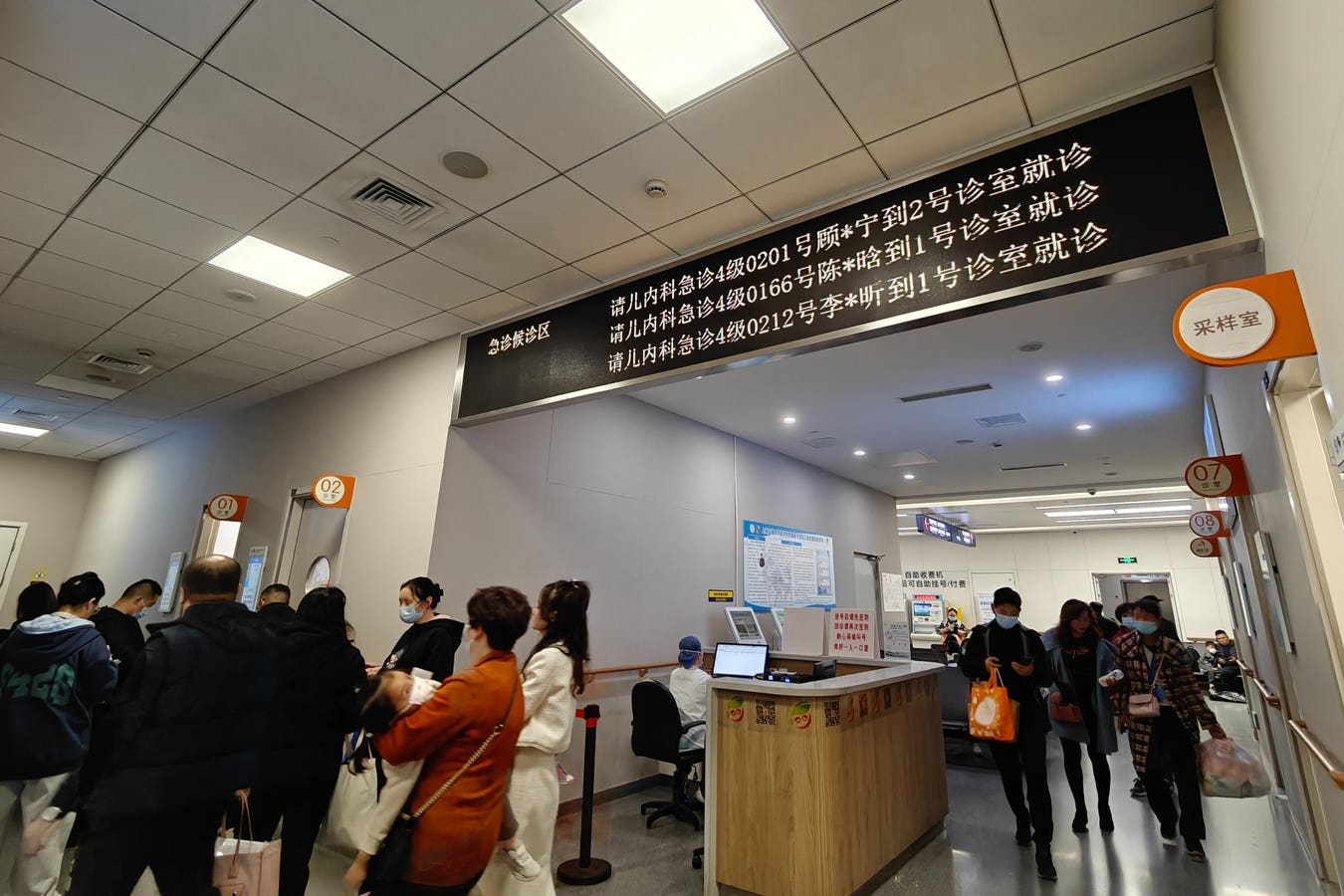Remember what happened the last time that China experienced a “mysterious pneumonia” outbreak? As I reported for Forbes back on January 3, 2020, during the last such outbreak, the words “mysterious” and “pneumonia” are two words that are rarely great to hear together, no matter how much you may want mystery in your life. As you probably know, things got kind of out of hand after that, as in Covid-19 pandemic out of hand. Well, now the M-word has resurfaced again in China, as clusters of mysterious pneumonia cases have emerged among children in Northern Chine. They are “mysterious” because the causes of the pneumonia are still unknown.
The World Health Organization (WHO) has to take any such outbreak very seriously as evidenced by, you know, the whole Covid-19 pandemic thing. That’s why the WHO has officially requested more information from China’s government on what a WHO statement described as a recent “increase in respiratory illnesses and reported clusters of pneumonia in children” in the country. This doesn’t mean that you should start using the P-word again and start hoarding rolls of toilet tissue. But the situation does warrant close monitoring.
China has already been experiencing an upswing of respiratory illnesses in general. Northern China has had increases in influenza-like illnesses since mid-October that have topped the numbers from the prior three years. Back on November 13, 2023, Chinese authorities from the National Health Commission blamed this upswing on their lifting of Covid-19 restrictions and the spread of rather familiar pathogens like influenza, Mycoplasma pneumoniae, respiratory syncytial virus (RSV), and, of course, the severe acute respiratory syndrome coronavirus 2 (SARS-CoV-2). China does have some surveillance systems in place to track the rates of these different pathogens. But they don’t necessarily make numbers from these systems publicly available.
The M-word—meaning “mysterious” and not Mycoplasma—surfaced after November 21, when PROMED and various news outlets began reporting about these clusters of pneumonia cases that didn’t have clearly defined causes. In other words, officials haven’t yet explained what specific pathogens may have led to these kids getting pneumonia.
The term pneumonia is a very general term for any condition where there’s inflammation of the tiny little sacs in your lungs called your alveoli. Alveoli is where the oxygen that you inhale passes from your respiratory tract into your bloodstream and carbon dioxide goes the reverse direction so that you can eventually exhale this carbon dioxide. Such inflammation can be accompanied by your alveoli filling up with fluid or pus that, in turn, can make it much more difficult for such oxygen-carbon dioxide exchange to occur. That can lead to different symptoms from pneumonia, ranging from cough to shortness of breath to respiratory failure.
So whenever you hear someone say, “I have pneumonia,” your next question should be “What’s causing it,” rather than simply saying, “Oh, that sucks” and walking away. The cause of the pneumonia can greatly affect its eventual treatability and prognosis.
Of course, a number of known respiratory pathogens including influenza, Mycoplasma pneumoniae, RSV, and SARS-CoV-2 can cause pneumonia. So, these pneumonia cases in Northern China could potentially, possibly, perhaps be linked to the general surge in respiratory illnesses. However, lots of things are still, surprise, surprise, about as clear as gravy about what’s happening in China. It’s not completely apparent whether the surge in respiratory illnesses is indeed completely due to already well-known respiratory pathogens. And it’s also not clear what’s been causing these mysterious pneumonia cases among children and whether that’s really linked to the upswing in respiratory illnesses in general. Thus, the situation in China remains a bit of a mystery, wrapped in an enigma, and bedazzled with question marks.
The WHO made its request to China for more info on November 22. This included asking for more laboratory results and clinical info on the affected children and surveillance data on what’s happening with influenza, SARS-CoV-2, RSV, mycoplasma pneumoniae, and other known respiratory pathogens. The WHO has also maintained communications with various medical doctors and scientists working in China through existing scientific and public health networks presumably independent of China’s government. Maintaining scientific communications independent of politics is important. After all, the Covid-19 pandemic has clearly demonstrated that in China as well as other countries around the world scientists and health professionals may say what political leaders may not be willing or capable of saying.
All of this doesn’t necessarily mean that another novel pathogen has emerged in China. And even if there is another novel pathogen on hand, there might still be the opportunity to keep it contained and controlled, which is definitely not what happened in 2020 with the SARS-CoV-2.
On the other hand, just because the SARS-CoV-2 and Covid-19 are still spreading, doesn’t mean that another major epidemic or even pandemic can occur. Viruses and other pathogens don’t say to each other, “You got this” or “We’ll stay on the sidelines while you spread.”
Therefore, this situation in China does deserves very close monitoring. At the same time, China’s government needs to be open about sharing epidemiological and clinical information with the rest of the world, just as any country needs to do so. As the Covid-19 pandemic and other epidemics throughout history have demonstrated, what happens in one country won’t necessarily stay in that country.
Read the full article here





